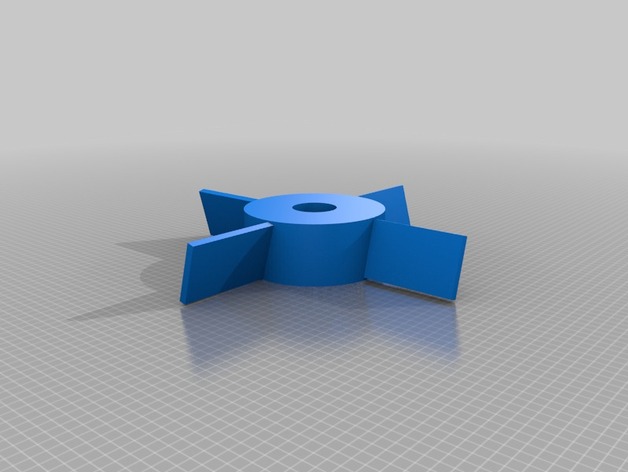
Science Experiment Turbines
thingiverse
This 3D model of a turbine blade is designed for an educational science project to study the efficiency of blades at different angles. The project involves printing two turbines with 15° and 30° angle blades, then testing their performance in a homemade wind tunnel. The print settings used were optimized for fine resolution and low infill density to achieve a balance between detail and weight. A previous attempt at printing the turbine at 60% infill resulted in an overly heavy model, but reducing the infill to 15% produced a satisfactory outcome. I created and 3D printed the turbine parts at home using a Printrbot Simple Black printer with no rafts or supports. The experiment was conducted as part of a science class assignment to investigate the efficiency of different blade angles. Lesson Plan and Activity Procedure: 1) Print two turbines with blades at 30° and 15° angles, respectively. 2) Design and print a stand for the turbines using the 3D printer. 3) Assemble the "air + water power PLUS" kit by THAMES KOSMOS following the instructions on pages 6 and 7. 4) Attach a yellow base to a green bottle using the kit's connectors. 5) Connect a hose to the pump and attach it to the base, then screw it onto the valve. 6) Pump the hose 20 times, turn the valve down, and remove the connector from the pump. 7) Attach two white connector pieces to the bottom of the base, then remove the yellow connector from the empty end of the hose. 8) Flip the bottle and base upside-down, thread the hose through the top middle holes of the connector struts, and cut a hole in a cardboard box near the edge that's 2.5 inches in diameter. 9) Place the turbine with the 15° angle on the stand sideways, with the end of the turbine blade 1 inch away from the nozzle on the bottle. 10) Duct tape the stand in place, hold the cardboard box, and flip the valve 90° to observe how many rotations the blade made. 11) Record the number of rotations and work in joules as "test 15° turbine." 12) Repeat steps 9-11 five times, then average up the data for the work. 13) Record all data on a table and compare it with the results from testing the 30° angle turbine. Materials Needed 1. 3D printer 2. Filament for the 3D printer 3. Computer 4. Pen 5. Paper 6. "air + water power PLUS" kit by THAMES KOSMOS (including hoses, connectors, pump, green bottle, and yellow base) 7. Measuring tool (ruler or yardstick) 8. Calculator 9. Duct tape 10. Knife (or scissors) 11. 3D models for the turbine and turbine stand 12. Mason jar
With this file you will be able to print Science Experiment Turbines with your 3D printer. Click on the button and save the file on your computer to work, edit or customize your design. You can also find more 3D designs for printers on Science Experiment Turbines.
